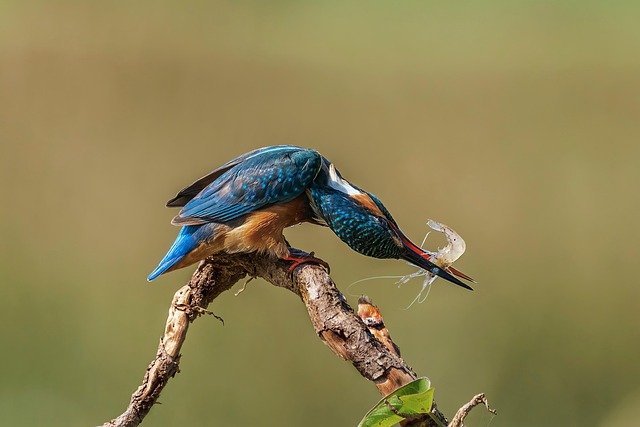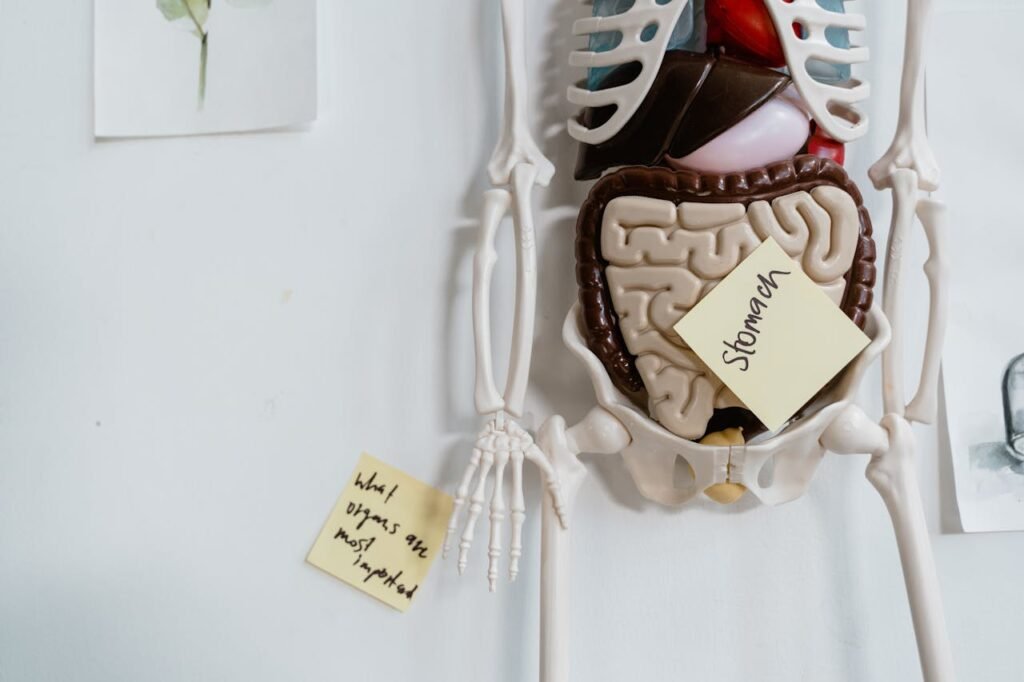Every time you eat a bite of food—whether it’s a carrot, a slice of bread, or a chicken nugget—you’re part of something much bigger than just a meal.
You’re part of the food chain.
The food chain is like a giant circle of life. It shows us who eats what… and who gets eaten. It’s how energy moves through nature—from the sun, to plants, to animals, and back again.
In this article, we’re going to explore how the food chain works, why it’s important, and how every living thing—no matter how big or small—has a special place in it.
You’ll see how grass feeds cows, how cows feed people, and even how bugs and bacteria play a secret but super important role.
And the more you learn, the more you’ll understand that eating isn’t just about staying full. It’s about keeping the world in balance.
Let’s dive in.
🌱 What Is the Food Chain?
Imagine you’re standing in a big open field. The sun is shining, grass is growing, and animals are munching away. This whole scene is part of something special called the food chain.
The food chain is nature’s way of passing energy from one living thing to another.
Every living thing needs energy to grow, move, and stay alive. But energy doesn’t come from nowhere. It starts with the sun and moves through plants, animals, and tiny living things that clean up when something dies.
In short, the food chain shows who eats whom—and how energy moves through life.
Sun → Plants → Animals → Other animals
That’s the food chain in its simplest form.
Now let’s explore each part of the chain in more detail.
🌿 Producers – Nature’s First Chefs

The first step in every food chain starts with plants. Why? Because plants are the only living things that can make their own food using sunlight. That’s a big deal.
These special living things are called producers.
They don’t need to hunt. They don’t need to eat other things. Instead, they use a special process (called photosynthesis) to take sunlight, water, and air, and turn it into food. That food is stored inside their leaves, stems, and roots.
So when a cow eats grass or a rabbit nibbles a leaf, they’re getting sun-powered energy that the plant made all by itself.
Examples of producers:
- Grass
- Trees
- Bushes
- Algae (tiny green stuff in water)
- Flowers
Without producers, there would be no food for anything else. Every food chain begins with plants.
🐇 Consumers – The Energy Takers
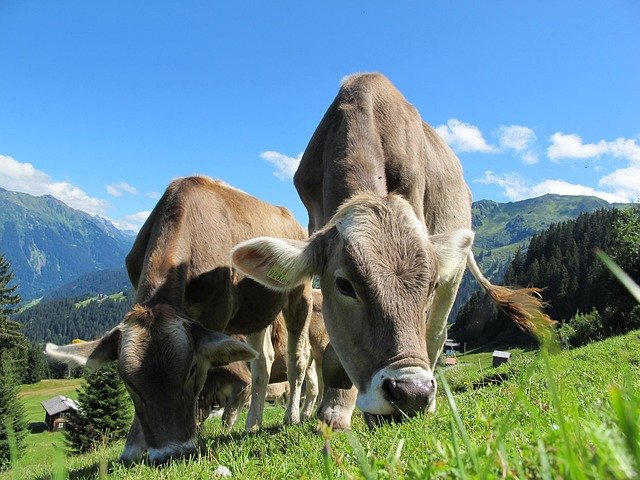
Consumers are animals. They can’t make their own food like plants do. Instead, they have to eat other living things to get energy.
There are three kinds of consumers.
1. Herbivores (Plant Eaters)
These animals eat only plants. They chew on leaves, grass, fruits, or flowers. They get their energy straight from producers.
Examples:
- 🐰 Rabbits
- 🐄 Cows
- 🐛 Caterpillars
- 🐘 Elephants
Herbivores are usually the first animal in the food chain, right after the plants.
2. Carnivores (Meat Eaters)
These animals eat other animals. They don’t eat plants—they eat the plant-eaters.
Examples:
- 🐺 Wolves (eat deer)
- 🦁 Lions (eat zebras)
- 🦉 Owls (eat mice)
- 🐍 Snakes (eat frogs)
Carnivores are the second or third animal in the chain, depending on what they eat.
3. Omnivores (Eat Both)
Omnivores eat plants and animals. They are flexible eaters and can survive in many places.
Examples:
- 🧑 Humans
- 🐻 Bears (eat berries and fish)
- 🐷 Pigs
- 🐦 Some birds
No matter what they eat, all consumers get their energy from eating other living things. That’s what links them in the chain.
🍄 Decomposers – The Hidden Heroes
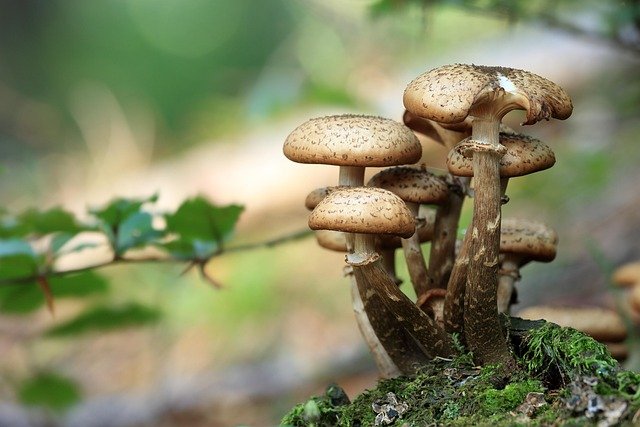
Now here comes the final group—the ones that don’t often get talked about, but do some of the most important work of all.
They’re called decomposers.
These tiny organisms break down dead plants and animals. They turn old, rotting things into nutrients that go back into the soil. These nutrients help plants grow again.
So in a way, decomposers close the loop in the food chain.
Examples:
- 🍄 Mushrooms
- 🪱 Worms
- 🦠 Bacteria
- 🧫 Fungi
Even though they are small and quiet, decomposers are the reason the world doesn’t fill up with waste—and the reason plants can grow fresh and strong again.
Without them, the food chain would stop.
So when you look at a simple bite of food, think about this:
- The sun gave energy to the plant.
- The plant gave energy to the animal.
- The animal passed energy to another animal.
- And when life ends, the decomposers return it to the Earth.
That’s the food chain—a smart, never-ending circle that keeps the world going.
In the Forest: A Food Chain Beneath the Trees
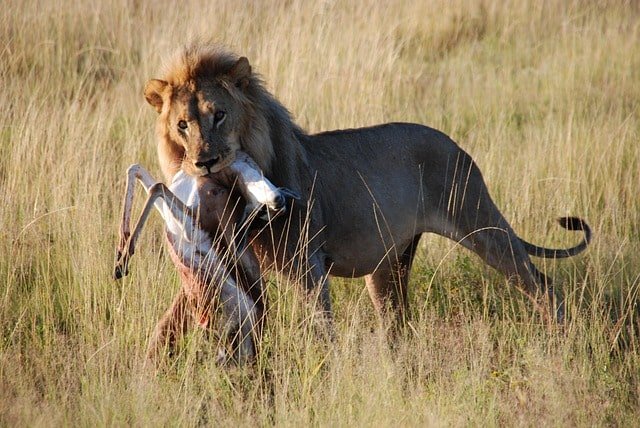
Imagine walking through a quiet forest. You see tall trees, soft moss, buzzing bees, and maybe a rabbit hopping between bushes. Even though it looks peaceful, there’s a busy food chain at work under your feet and above your head.
Let’s explore one forest food chain, step by step.
☀️ Sun → 🌱 Grass → 🐇 Rabbit → 🦊 Fox → 🍄 Mushroom
Grass: The Start of Everything
The grass is a producer. It stands quietly in the sun, turning light into food through its leaves. It doesn’t hunt. It doesn’t move. But it holds the sun’s energy—ready for the next animal to come along.
Rabbit: The Plant Eater
A rabbit hops by and munches on the grass. It’s a herbivore, which means it eats only plants. By eating the grass, the rabbit takes in the energy the plant made from the sun.
Now the energy has moved from the sun → to the grass → to the rabbit.
Fox: The Hunter
Not far away, a fox watches quietly. It pounces and catches the rabbit. Now the energy moves again—from the rabbit to the carnivore, the fox. The fox didn’t eat the grass, but it still got the energy that started in the sun. That’s how the food chain moves.
Mushroom: The Final Step
One day, the fox dies. Its body doesn’t stay on the ground forever. Tiny mushrooms and decomposers like fungi and bacteria begin to break it down. They turn the fox into nutrients, which go back into the soil—ready to feed new plants.
And the cycle begins again.
Even in a peaceful forest, everything is connected through energy and life. It’s all one big team.
In the Ocean: A Food Chain Underwater
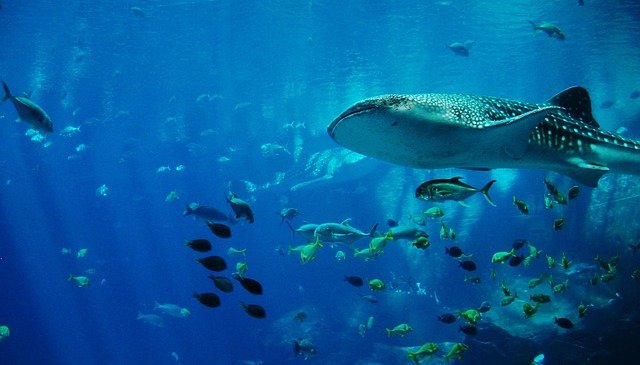
Now picture the ocean. It looks like just water—but underneath the waves, there’s an entire world of life. Fish, crabs, whales, and even glowing jellyfish all have their part in the food chain.
Let’s look at a simple ocean food chain.
☀️ Sun → 🦠 Plankton → 🐟 Small Fish → 🦈 Shark → 🦠 Bacteria
Plankton: The Ocean’s Grass
Plankton are tiny—but mighty. They float near the top of the ocean and use sunlight to make their own food, just like grass does on land. Plankton are the ocean’s producers.
Small Fish: The Quick Snack
A school of little fish, like anchovies or sardines, swims by and gobbles up the plankton. These fish are herbivores or sometimes omnivores—they eat tiny plant-like creatures and pass the energy along.
Shark: The Big Hunter
Further down the chain is a shark. It swims quietly, looking for a meal. When it eats a smaller fish, it gets all the energy that started in the plankton. The shark is a top predator—nothing eats it.
Bacteria: The Ocean Cleaners
When animals die in the ocean, their bodies sink to the bottom. Down there, bacteria and tiny creatures break them down. They return nutrients to the sea so more plankton can grow again.
The ocean is vast, but the food chain still follows the same simple steps: sun, plant, animal, decay, repeat.
In the Backyard: A Food Chain Close to Home
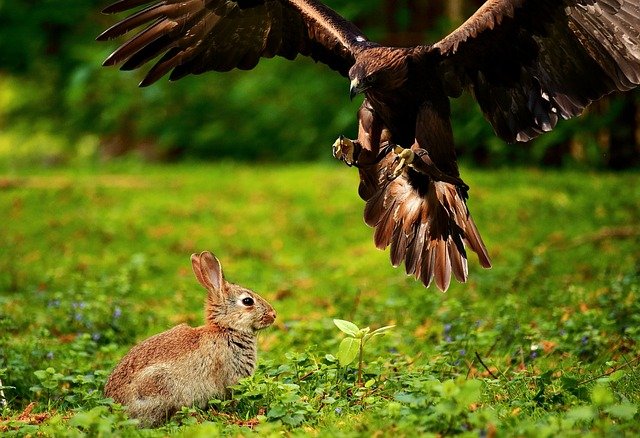
You don’t need to travel far to find a food chain. You can spot one just by watching your garden or local park.
Let’s look at a real-life backyard example.
☀️ Sun → 🍀 Clover → 🐛 Caterpillar → 🐦 Bird → 🪱 Worm
Clover: The Green Starter
This little plant might look ordinary, but it’s the start of the food chain. It soaks up sunlight and makes food in its leaves.
Caterpillar: The Leaf Muncher
A fuzzy caterpillar crawls up and chews the clover leaves. It’s eating the plant and taking in the sun’s energy. That makes it a consumer.
Bird: The Quick Flier
A bird watches from a nearby branch. It dives down, snatches the caterpillar, and eats it. Now the energy moves from clover → caterpillar → bird.
Worm: The Recycler
When the bird dies, worms and fungi help break down its body. The nutrients go back into the soil to help more clover grow.
And the cycle starts again.
Even in the smallest backyard, you can find a full food chain working quietly. You just have to slow down and look.
Every environment—from forests to oceans to the space behind your house—has its own special food chain. But they all follow the same pattern:
Energy from the sun → through producers → to consumers → then back to the earth.
That’s the wonder of the food chain.
Why the Food Chain Matters (And What Happens When It Breaks)
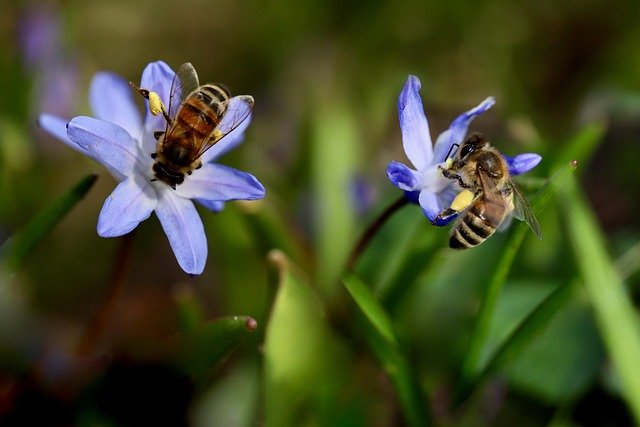
Every food chain might seem small at first—just a plant, a rabbit, and a fox. But when you zoom out, you’ll see it’s part of something much bigger: the balance of life on Earth.
The food chain keeps everything in nature connected. When one part works well, the whole system stays strong. But when one part is missing or harmed, the whole chain starts to wobble.
Let’s take a closer look at why that matters so much.
🌍 Everything Is Linked Like a Web
Even though we call it a “chain,” a better word might be web. Because in real life, animals don’t eat just one thing. They eat many things. And many things eat them. That creates a web—a network of connections.
For example:
- A single hawk might eat rabbits, mice, snakes, or even frogs.
- Those animals eat grass, berries, or bugs.
- Those bugs might eat dead leaves, fruit, or other insects.
It’s all connected. So if one part of that web disappears—like if frogs suddenly vanished—the animals that eat frogs would have less food. And the animals that frogs ate might grow out of control.
The web gets tangled. The balance is lost.
What Happens When Just One Animal Disappears?
Let’s look at some real-world examples:
🐝 No Bees, No Fruit
Bees don’t just buzz around flowers. They help plants grow by moving pollen from one flower to another. This is called pollination.
Without bees:
- Fruits and vegetables won’t grow properly.
- Flowers stop producing seeds.
- Plant-eating animals like birds, squirrels, and insects lose their food.
- Predators that eat those animals go hungry too.
And humans? We rely on bees for over one-third of the food we eat. Without bees, your dinner plate would look very empty.
🐺 No Wolves, Too Many Deer
This really happened in Yellowstone National Park in the U.S.
A long time ago, people removed wolves from the park. Without wolves:
- Deer and elk numbers grew too fast.
- They ate all the grass and young trees.
- Birds had fewer trees to nest in.
- Rivers even changed course because the plants that held the soil together were gone.
When wolves were brought back, everything began to heal—because the balance of the food chain was restored.
🧍 How It Affects Us Humans
You might think, “Well, I’m not a frog or a wolf. Why should I care?”
But here’s the truth: We are part of the food chain too.
We eat plants and animals. We grow food in the ground. We depend on clean air, clean water, and healthy land.
When food chains break:
- Farms can struggle.
- Oceans can empty of fish.
- Diseases can spread more easily.
- Forests can dry out and disappear.
- Prices of food can rise.
Everything starts to shift.
So, understanding the food chain isn’t just science—it’s about protecting the way we live.
🌿 Every Creature Counts
The food chain teaches us something powerful:
Even the smallest creatures matter a lot.
Worms feed the soil. Frogs eat mosquitoes. Bees grow apples. Mushrooms clean up the forest.
No job is too small. No animal is “just a bug.” Every role is important.
When we protect nature and respect each part of the food chain, we’re not just helping animals—we’re helping ourselves.
How Debsie Helps Kids Explore the Food Chain (And Fall in Love with Science)

At Debsie, we believe that learning should feel like discovering a secret world—one that makes kids go, “Wow! I never knew that!”
The food chain is one of those magical ideas. It’s simple at first—plants, animals, energy—but the more kids explore it, the more they realize just how amazing nature really is.
That’s why Debsie doesn’t just “teach” the food chain. We bring it to life. We make it feel real, personal, and fun—whether a child is 5 or 15, curious or cautious, shy or bursting with questions.
Here’s how:
🧑🏫 1. Live Classes That Feel Like Conversations
When kids join a Debsie class, it’s not a boring science talk. It’s a two-way, teacher-led conversation where they’re invited to:
- Ask why lions don’t eat grass
- Guess what might happen if all frogs vanished
- Build their own food chains from animals they know
Debsie’s partner teachers are warm, funny, patient, and deeply knowledgeable. They meet each child where they are—whether it’s their first time hearing about food chains or they’re already reading books about ecosystems.
And because classes are small and live, every child gets noticed and heard.
🧩 2. Gamified Lessons That Make Science a Game
Kids learn best when they’re having fun. That’s why Debsie turns lessons into little adventures, where every activity feels like a challenge or mission.
In our food chain units, kids might:
- Build their own animal kingdom, choosing who eats what, then see what happens if one link disappears.
- Go on scavenger hunts—in the backyard or even in books—to find real-life examples of producers, consumers, and decomposers.
- Join “What If?” battles—like what happens if sharks ruled the forest or fungi grew in the desert.
These activities make science feel like play—but every moment is rooted in real, deep learning.
🌿 3. Real-World Activities at Home
We believe the best classroom is often just outside your door.
That’s why Debsie gives kids and parents simple, easy ways to explore the food chain right at home:
- Start a mini compost pile and watch decomposers like worms, bugs, and fungi turn scraps into soil.
- Set up a bird-feeding station and observe food behaviors—which birds eat seeds? Which chase others away?
- Go on a “producers hunt” in a park—count trees, bushes, flowers, even little green weeds.
These real-life observations make kids say, “Look, I found a decomposer!” or “That bird just caught a worm!”
And just like that, they’re not just learning science—they’re living it.
🎨 4. Every Child Learns Their Way
Debsie celebrates that every child learns differently. So we design our food chain lessons with care for all styles:
- Visual learners love drawing food webs, color-coding animal groups, or watching animal clips.
- Hands-on learners thrive with building mini habitats or modeling energy flow with toys and blocks.
- Auditory learners listen to animal stories and join group discussions.
- Creative thinkers invent new creatures and test how they’d survive in different chains.
We also make sure our lessons grow with your child—from playful exploration for young learners, to more complex thinking and ecosystems for older students.
💬 5. Lessons That Build Life Skills Too
Yes, your child will learn the food chain. But they’ll also learn:
- Critical thinking (“What if this animal goes extinct?”)
- Observation (“What role does this bug play?”)
- Problem-solving (“How do we fix a broken chain?”)
- Curiosity that helps in learning and confidence (“I figured that out on my own!”)
Because science is not just about knowing facts. It’s about learning how to think clearly, ask questions, and see patterns in the world.
And that’s something Debsie helps every child build—not just for school, but for life.
Final Thoughts: The Food Chain Connects Us All
The food chain isn’t just about animals and plants. It’s about life working together. From the tiniest ant to the tallest tree to the biggest whale—every living thing plays a part. And that includes us, too.
When your child understands the food chain, they don’t just learn about science. They learn about balance, respect for nature, and how everything is connected. They start seeing the world with curious eyes. They ask better questions. They grow into thoughtful thinkers.
That’s what we do at Debsie—we help children not just learn, but understand deeply. With joyful lessons, kind teachers, and hands-on projects, we make the food chain come alive.
So if your child is curious about how the world works…
If they love animals, plants, and big “why” questions…
If you want them to learn in a way that feels fun, personal, and lasting…
Then you’ll love what Debsie has to offer.
👉 Book a free trial class today.
👉 Explore our science and STEM courses—designed for ages 5 to 18.
👉 Let your child see the world through the lens of science—and fall in love with learning.
Let’s raise a generation of thinkers, problem-solvers, and nature lovers—one joyful lesson at a time.
Read Next:
